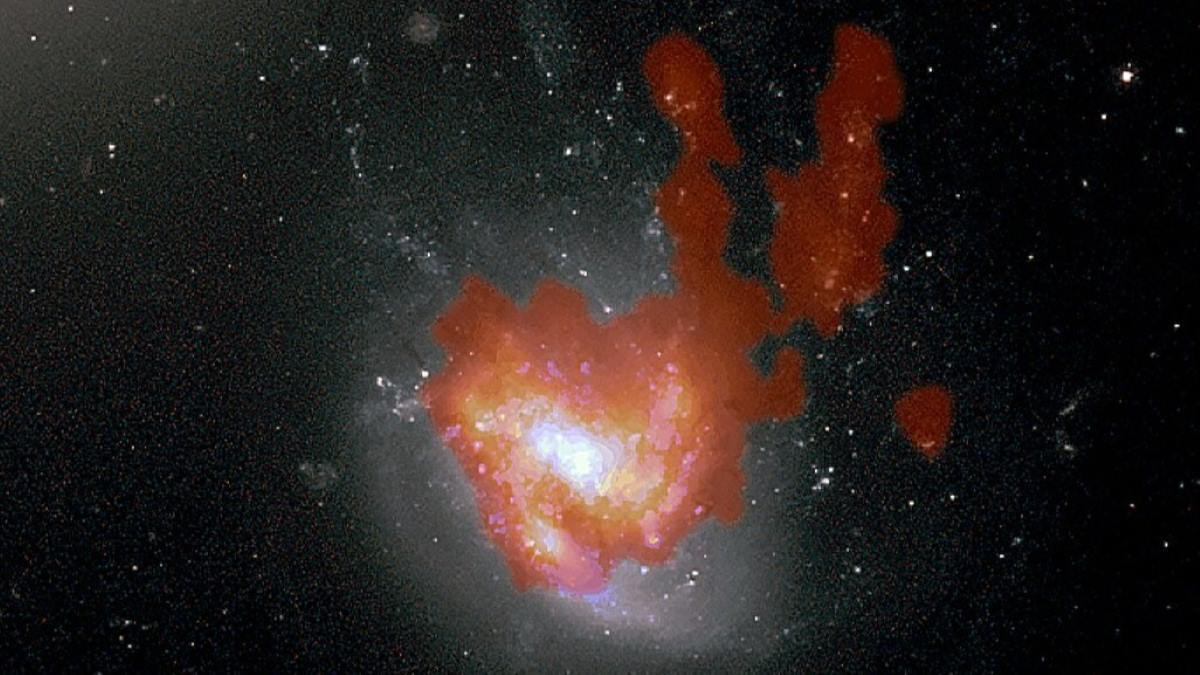14.06.2025

Describing what a galaxy looks like seems to be a bit like finding shapes in clouds – everyone’s perspective is different – but the shape of galaxies provides important clues as to their development.
Astronomers have discovered a galaxy which they say resembles a jellyfish with bunny ears – if you squint really hard.
But it’ analysis of the galaxy which has revealed unusual dynamics which are helping them understand some of the most extreme environments in the universe.
NGC 4858 is in the Coma cluster more than 300 million light-years from Earth. It is described in a preprint paper which is available on the arXiv server.
Galaxy clusters are some of the largest objects in the universe, containing hundreds or thousands of galaxies. They’re also home to massive amounts of hot gas and, astronomers suspect, dark matter.
Galaxies within these clusters experience extreme pressure, called ram pressure or “wind”, which strips some the gas away from the galaxy. This stretches the galaxy, giving it a jellyfish-like shape, and long trails of gas and young stars that resemble jellyfish tendrils.
NGC 4858 is moving very quickly through the Coma cluster.
“It is effectively in a wind tunnel, and its gas is in the process of being stripped away by the wind,” says first author Harrison Souchereau from Yale University in the US.
Souchereau and colleagues used data from a survey looking for jellyfish galaxies conducted by the ALMA (Atacama Large Millimeter/submillimeter Array) radio telescope in northern Chile.
The images also revealed new features: distorted spiral arms that the astronomers are calling “bunny ears” which Souchereau says are likely caused by “a combination of the environmental wind pushing on the gas, and the rotation of the galaxy”.
Souchereau’s team also found the best evidence to date of a phenomenon called “fallback”.
Fallback is when gas has been stripped away from a galaxy, but then falls back toward the galactic disk.
“Most people think of ram pressure stripping as removing the gas from galaxies, which is the main effect and a big deal, since gas is the raw material for star formation,” says senior author Jeffrey Kenney, also from Yale. “But sometimes gas can get pushed out but not stripped, since it never reaches the escape speed. So it falls back, creating a kind of galactic fountain. When this happens, the gas falling back often concentrates in distorted spiral arms on one side of the inner tail.”
The researchers say the fact that NGC 4858 is face-on makes it a prime candidate for further studies into the effects of ram pressure and rotation on galaxies in the extreme conditions of massive clusters.
Quelle: COSMOS
